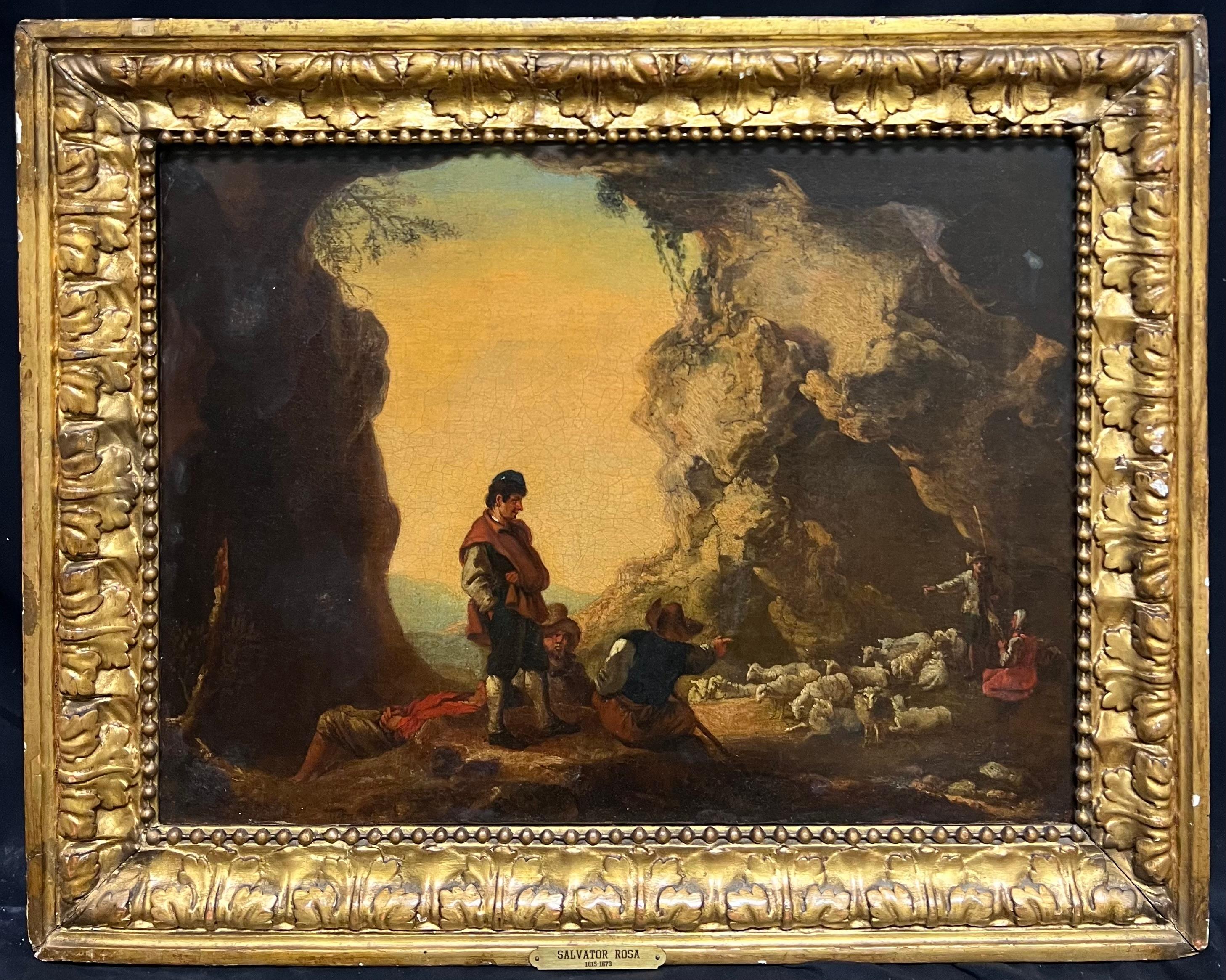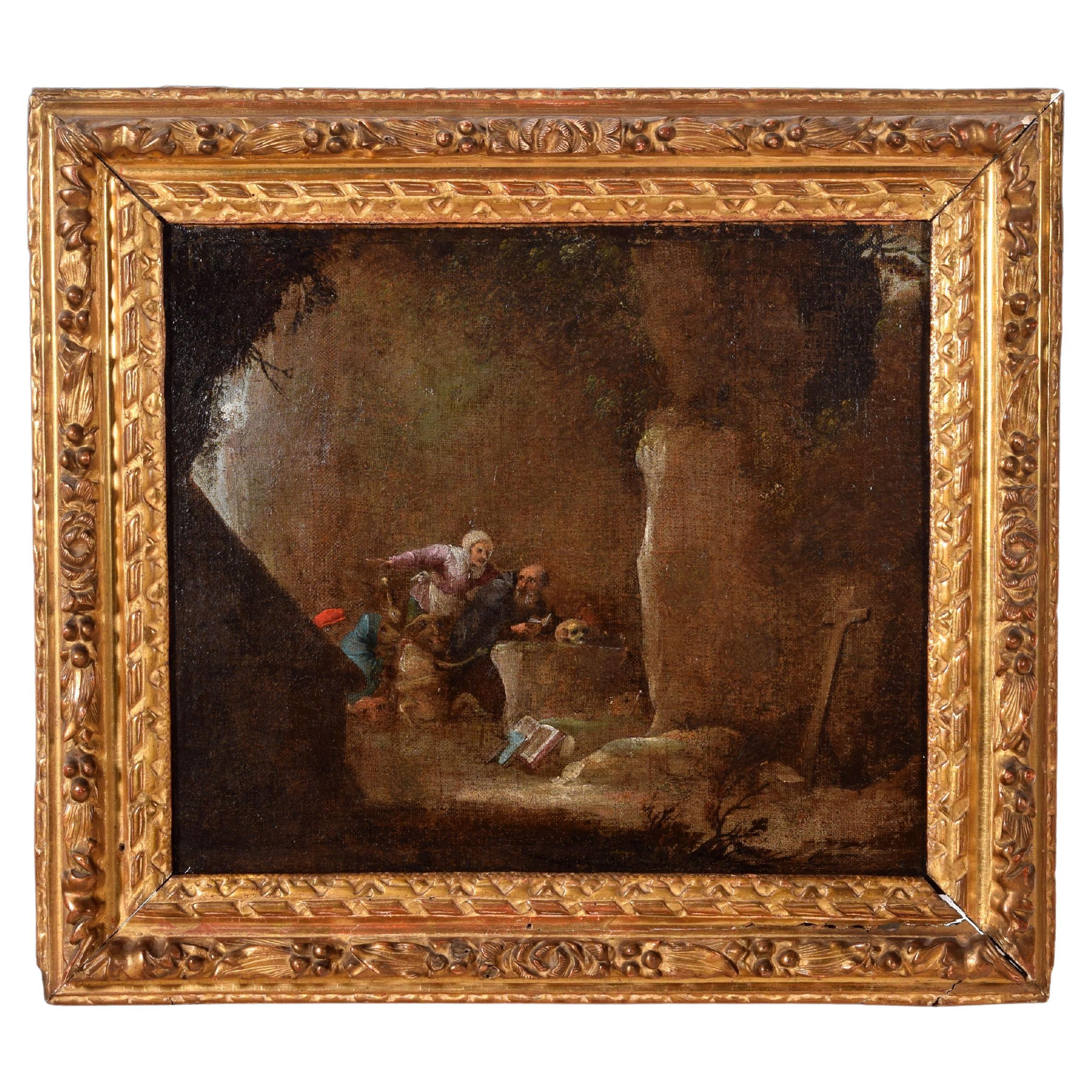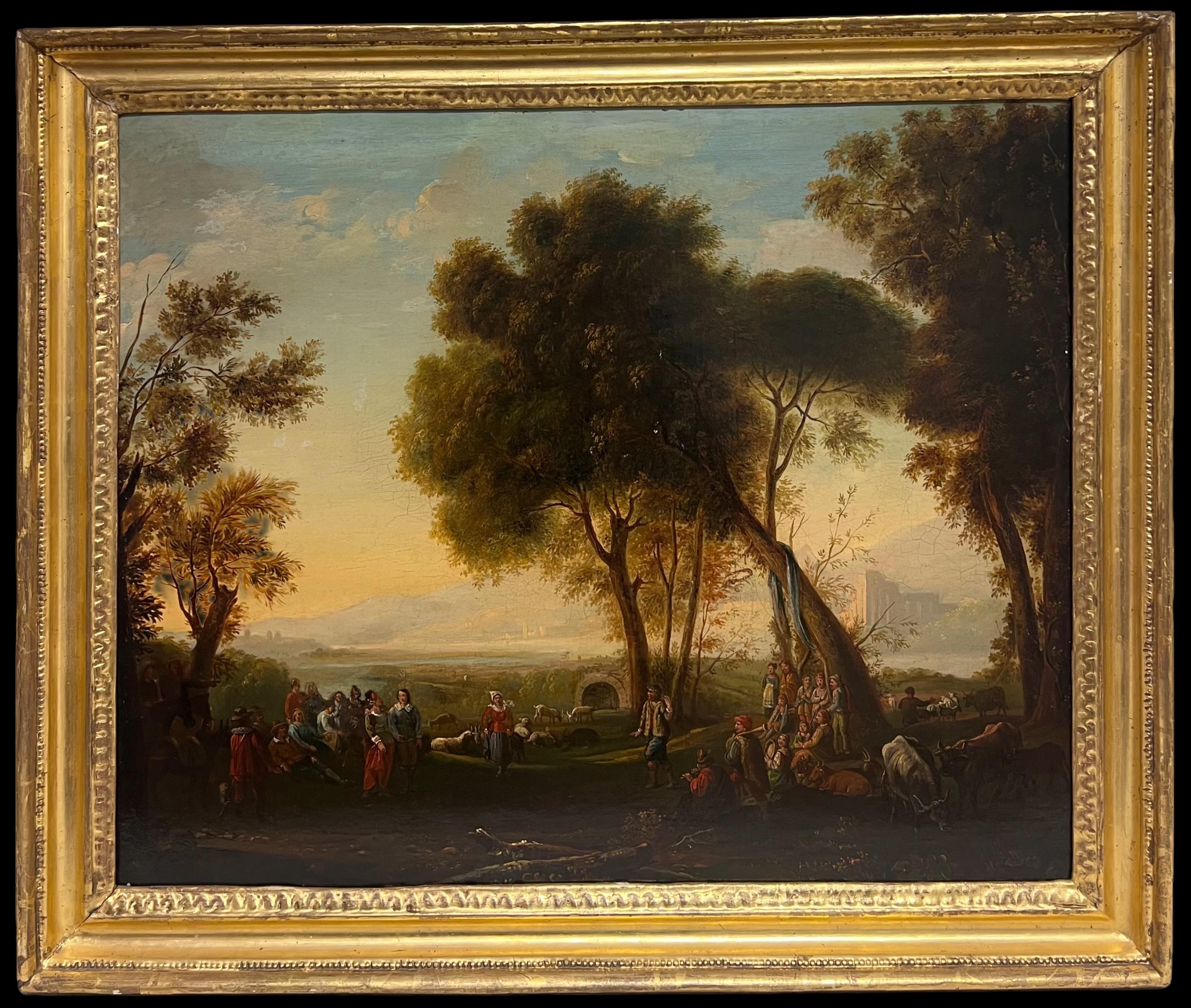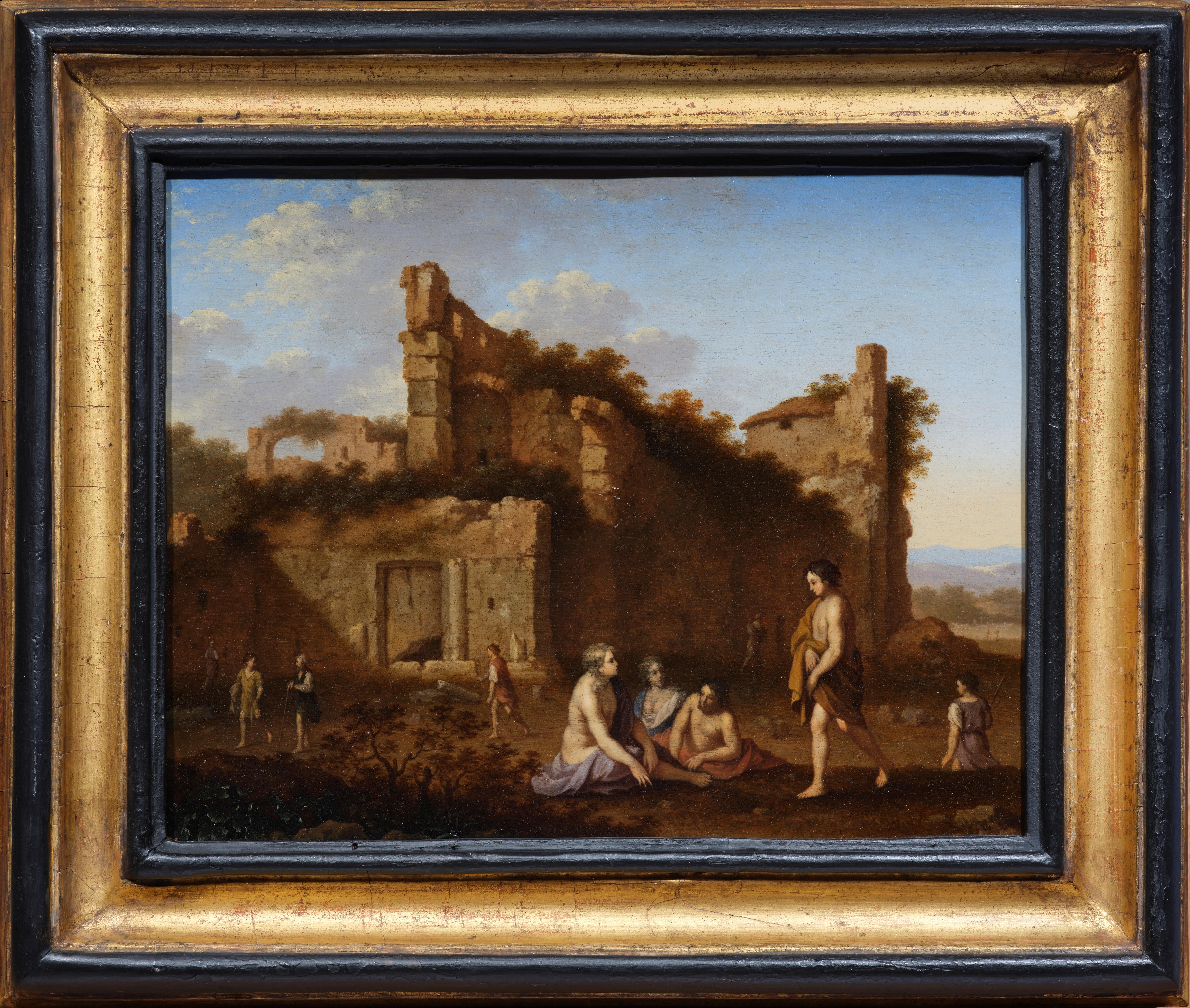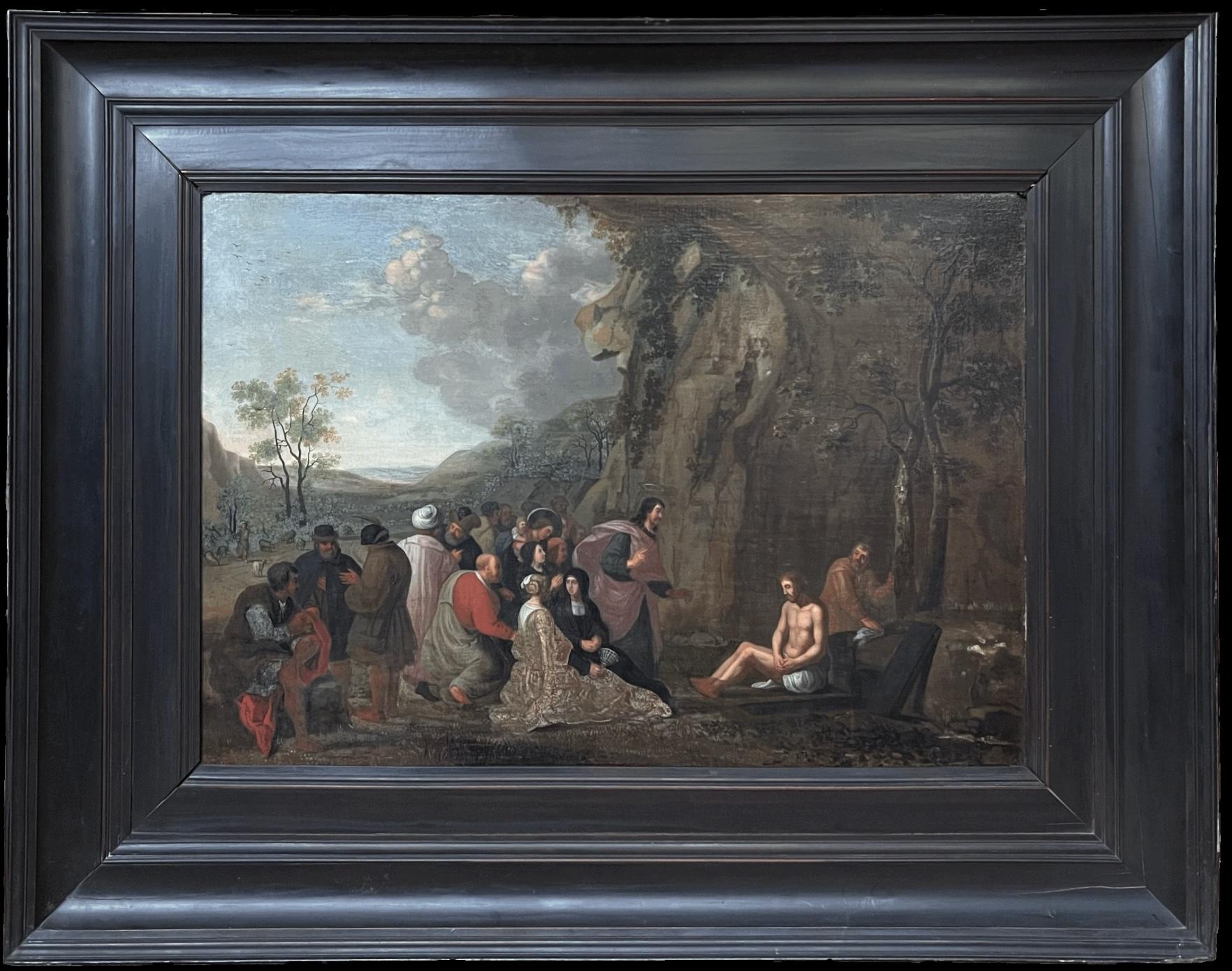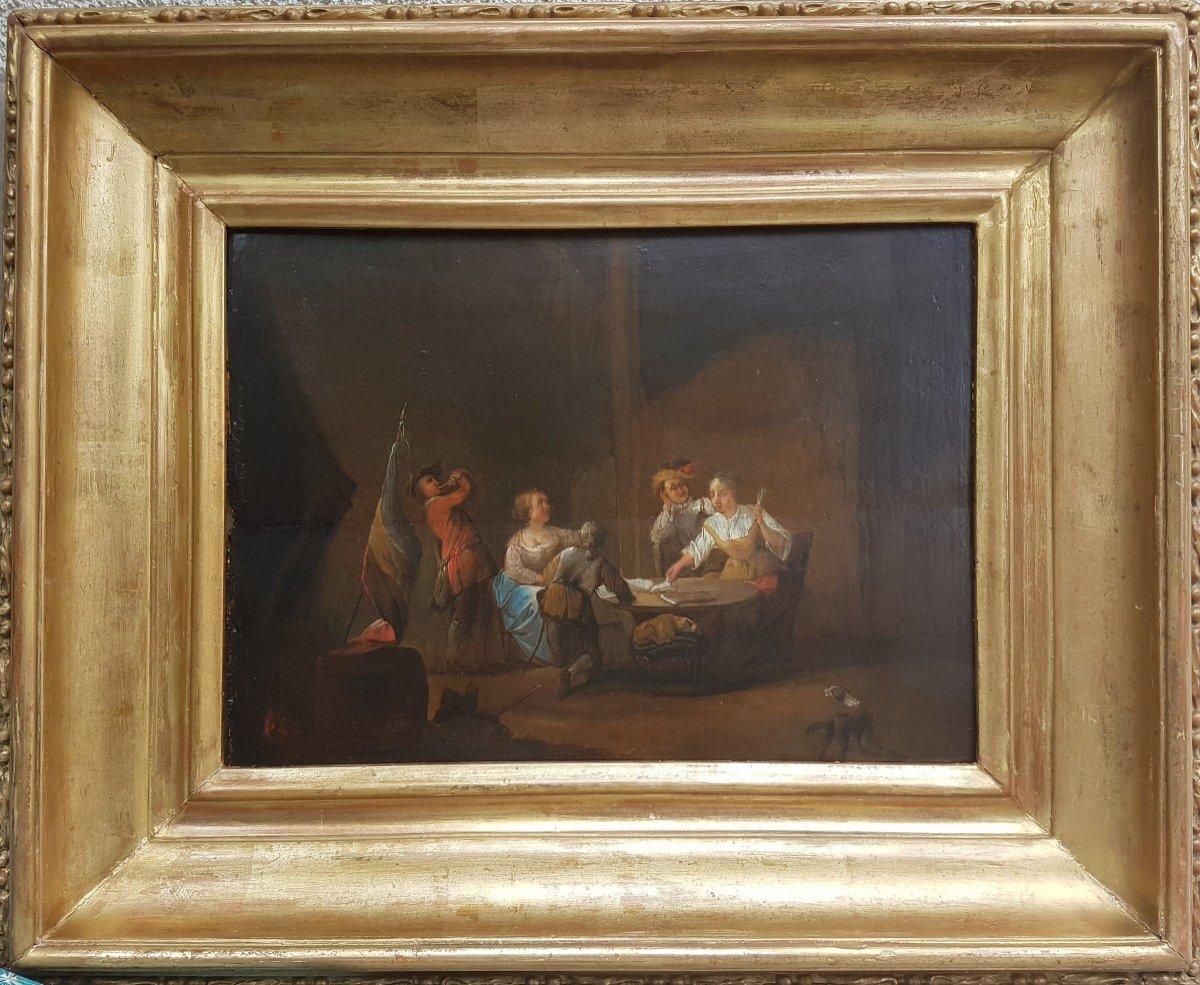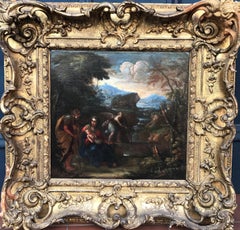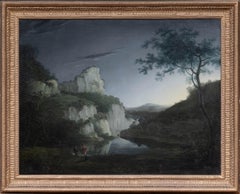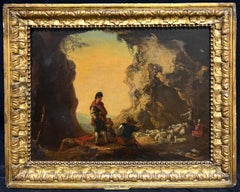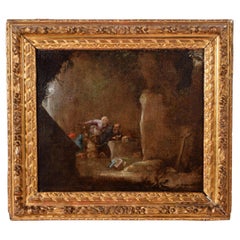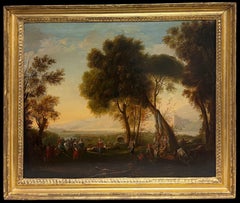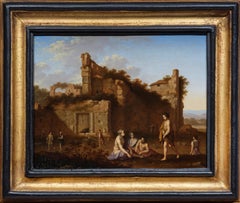Items Similar to 17th Century Classical Oil Painting - Diana With Her Attendants in a Grotto
Want more images or videos?
Request additional images or videos from the seller
1 of 11
Abraham van Cuylenborch17th Century Classical Oil Painting - Diana With Her Attendants in a Grotto1651
1651
$7,979.38
£5,800
€6,776.44
CA$10,961.79
A$11,966.59
CHF 6,300.56
MX$143,345.83
NOK 80,581.82
SEK 73,572.54
DKK 50,621.58
About the Item
Abraham van CUYLENBROCH (1620-1658)
Diana With Her Attendants in a Grotto
1651
signed
oil on panel
12.2 in x 15.7 inches, inc. frame;
31 x 40 cm
Provenance:
Sale of Sotheby's London: Wednesday, December 6, 1989 [Lot 00219]
Abraham van Cuylenborch was a Dutch Golden Age landscape.
In 17th-century Dutch inventories, this painting is always described as a grotto, which shows its popularity as an independent motif. Cuylenborch was already enjoying great success with such pictures amongst contemporary critics and collectors. A preference for imaginary views was the most striking characteristic of Utrecht landscape painting in the 1st half of the 17th century. In other parts of the region, artists concentrated on Dutch landscapes or city vedute. Cuylenborch’s oeuvre consists largely of such grotto. Aside from him, only Dirk Stoop and Carel de Hooch were producing comparable cave pictures in Utrecht. Outside Utrecht, his only competitor was the Amsterdam painter, Rombout van Troyen.
- Creator:Abraham van Cuylenborch (1620 - 1658)
- Creation Year:1651
- Dimensions:Height: 12.2 in (30.99 cm)Width: 15.7 in (39.88 cm)
- Medium:
- Movement & Style:
- Period:
- Condition:
- Gallery Location:London, GB
- Reference Number:1stDibs: LU67337313162
About the Seller
5.0
Vetted Professional Seller
Every seller passes strict standards for authenticity and reliability
Established in 1990
1stDibs seller since 2017
45 sales on 1stDibs
Typical response time: 15 hours
- ShippingRetrieving quote...Shipping from: London, United Kingdom
- Return Policy
More From This Seller
View All17th Century Old Master Religious Oil painting - Rest on the Flight into Egypt
By Pier Francesco Mola
Located in London, GB
Attributed to Pier Francesco MOLA, called Il TICINESE (1612-1666)
Rest on the Flight into Egypt
oil on canvas
25.5 x 27 inches including ...
Category
Mid-17th Century Baroque Figurative Paintings
Materials
Oil
18th Century Neoclassical Oil Painting of the Trojan War: Briseis & Achilles
By James Thornhill
Located in London, GB
James Thornhill (1674-1735)
Oil on canvas
12 x 14 inches;
16 ½ x 18 ½ in. Inc. frame
The subject matter and inclusion of herms on both sides shows the influence of Louis...
Category
Early 18th Century Old Masters Figurative Paintings
Materials
Canvas, Oil
Dutch 17th Century Oil Painting - The Card Game by Ter Borch
By Gerard ter Borch the Younger
Located in London, GB
Gerard ter Borch
The Cards Game
Oil on canvas
14 x 15.5 inches unframed
19 3/4 x 21 1/2 inches framed
Gerard ter Borch (Dutch; December 1617 – 8 December 1681), also known as Gerard Terburg, was an influential and pioneering Dutch genre painter who lived in the Dutch Golden Age. He influenced fellow Dutch painters Gabriel Metsu...
Category
17th Century Old Masters Interior Paintings
Materials
Oil
18th Century Lanscape Oil Painting of Matlock High-Torr
By Thomas Smith (b.1720)
Located in London, GB
Thomas Smith of Derby
Matlock High-Torr Landscape
Oil on canvas
27 x 34.5 inches unframed
34 x 41.5 inches including frame
Thomas Smith of Derby (died 12 September 1767) was an Engl...
Category
18th Century Old Masters Landscape Paintings
Materials
Oil
Oil Painting of Landscape with 'The Papal Palace at Avignon'
By Pieter Bout
Located in London, GB
Provenance:
Sotheby’s December 5th 2006, Lot 388
Bout was a Flemish painter, draughtsman and etcher. He is known mainly for his landscapes, city, coast and country views and archite...
Category
Early 18th Century Old Masters Landscape Paintings
Materials
Oil
Beautiful 19th century Oil on Panel Landscape by Richard Hilder
By Richard H. Hilder
Located in London, GB
Richard Hilder (1813-1852)
Pastoral Landscape
Oil on Panel
8 3/4 X 10 3/4 inches, Framed
Provenance: Important Private Collection
Richard H. Hilder was a landscape painter and occa...
Category
Early 19th Century Landscape Paintings
Materials
Oil
You May Also Like
Fine 17th Century Italian Old Master Oil Pastoral Scene with Shepherds at Dusk
By Salvator Rosa
Located in Cirencester, Gloucestershire
The Close of Day
Italian School, 17th century
circle of Salvator Rosa (1615 - 1873)
(ascribed to this artist on a frame plaque)
oil on canvas, framed
Framed: 20.5 x 25.5 inches
Canva...
Category
17th Century Baroque Figurative Paintings
Materials
Oil, Canvas
The temptation of St Anthony. Oil on canvas. 17th c., after David Teniers II
By David Teniers the Younger
Located in Madrid, ES
Temptations of San Antonio Abad. Oil on canvas. 17th century, following the model of David Teniers II (Antwerp, 1610-Brussels, 1690).
Oil on canvas showing a figurative scene located inside a cave. To the right, you can see a cross standing, supported; to the left, a hut; and in the center of the painting appears an elderly, bearded man, leaning on a table on which there is a ceramic jug and a skull, with an open book at the foot of it. The man looks towards a woman, who points to something outside, and appears accompanied by a large frog and a series of ghostly beings or monsters dressed in brightly colored cloth and clothing.
San Antonio Abad or Antonio Magno (251-356) was a Christian monk, considered the founder of the eremitical movement. He was tempted numerous times by the devil while he was in the desert, becoming a subject frequently represented in art (as can be seen in this oil painting). He is represented in a black habit because the Order of the Knights of the Hospital of San Antonio (Hospitals) was placed under his patronage, being the color of the habits of the members of this order (the tau or Egyptian cross was also the symbol chosen by they).
David Teniers II or El Joven was a prominent Flemish painter and engraver, son of David Teniers El Viejo or I and father of David Teniers III, much appreciated at the time for his scenes of villagers and common people, his paintings of monkey painters, etc. . He dealt with the theme of the Temptations of Saint Anthony...
Category
Antique 17th Century European Baroque Paintings
Materials
Other
Fine 17th Century Dutch Golden Age Old Master Oil Figures in Classical Landscape
Located in Cirencester, Gloucestershire
Figures in Classical Landscape
Dutch School, 17th century
unsigned, as is typical of the period
oil on canvas, framed
inscribed verso to label
framed: 23 x 27 inches
canvas : 20 x 24...
Category
17th Century Old Masters Landscape Paintings
Materials
Oil
Gathering in antique Ruins, a monogrammed painting by Jan van Haensbergen
By Jan Van Haensbergen
Located in PARIS, FR
Jan van Haensbergen was a painter of the Dutch Golden Age and a pupil of Cornelius van Poelenburgh (Utrecht 1594 - 1667). The painting we are presenting is inspired by Poelenburgh’s landscapes from his Italian sojourn. The dreamlike atmosphere of this Gathering in antique ruins appealed to us. Against a backdrop of antique ruins, three draped characters (perhaps bathers) are sitting in a circle, greeting a fourth character walking towards them.
Their tranquility contrasts with the bustle of the other characters in the background. They constitute a vivid illustration of otium, this leisure time that allows us to realize our full potential. With this Arcadian landscape, Jan van Haensbergen invites us in turn to leave the hustle and bustle of everyday life behind, to take a break, to enjoy the present moment chatting with close friends…
1. Jan van Haensbergen, a landscape and portrait painter of the Dutch Golden Age
Jan van Haensbergen was born in 1642 in Gorinchem, a town in southern Holland to the east of Rotterdam. He was a pupil of Cornelius van Poelenburgh, and began by painting landscapes inspired by those of his master, in an Italianate style. Between 1668 and 1669, he was registered at the Guild of Saint Luke in Utrecht.
In 1669, he moved to The Hague, where he joined the Confrérie Pictura, an artist society founded in 1656. His portraits, which became his main activity as a painter after settling in The Hague, were strongly influenced by Caspar Netscher (Prague or Heidelberg 1639 - The Hague 1684), whom he met in The Hague and whose son Constantijn became his son-in-law by marrying his daughter Magdalena.
In addition to his work as an artist, Van Haensbergen was also an art dealer, probably helped by his appointment as Dean of the Confrérie Pictura, where he also teached.
2. Description of the artwork and related paintings
This painting seems to us to be a kind of allegory of otium, that quiet bliss promised by Epicurus. It might even evoke an Epicurean proverb: "It is better to lie on the naked ground and be at ease, than to have a golden carriage and a rich table and be worried" .
Three draped young people - two men and a woman in the background - are seated in a circle, greeting a fourth figure walking towards them, hair disheveled and body draped in a towel as if drying off after a bath, indicating the need for prior purification to fully enjoy this rest. Their nonchalance contrasts with the bustle of the various characters in the background.
The composition is punctuated by successive diagonals, and opens onto a landscape on the right, with a succession of mountainous planes. This painting is typical of the Italianate works produced by Van Haensbergen in the 1660s under the influence of Cornelis van Poelenburgh...
Category
17th Century Old Masters Landscape Paintings
Materials
Oak, Oil
Large 17th Century Flemish Old Master Oil Painting Resurrection of Lazarus
Located in Cirencester, Gloucestershire
The Resurrection of Lazarus
Flemish Old Master, 17th century
(unsigned as is typical for the period)
oil on canvas, framed
framed: 30 x 38 inches
canvas: 19 x 27 inches
Provenance: ...
Category
17th Century Baroque Figurative Paintings
Materials
Oil
Painting flemish school 18th century oil on panel wood - Interior tavern
Located in PARIS, FR
Nordic school of the 18th century Oil on panel on wood 27 cm x 33 cm (42 x 51 cm with the frame) Old frame in carved and gilded wood Good condition even ...
Category
18th Century Dutch School Interior Paintings
Materials
Oil
$1,297 Sale Price
20% Off
More Ways To Browse
Antique Classical Painting
Classical Century Oil Painting
Antique Dirk
Diana Painting 17th Century
Liseth Visser
Lotus Car
M F Hussain
Maimon Artist
Marie Antoinette Oil Painting
Marten Huitsing
Maya Green
Mervyn Peake
Moustapha Baidi Oumarou
Naive Art Haiti
Native American Girl Painting
Ned Jacob
Nuns In Art
Oil Painting Last Supper
